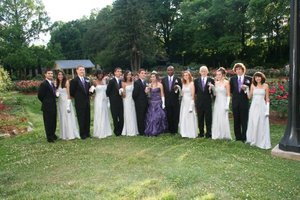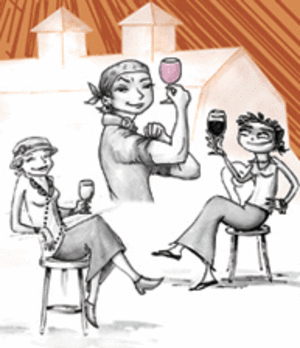A young woman’s 15th birthday in the Latin American culture is marked with a special ceremony, the quinceanera. It begins with a church blessing followed by a reception that rivals that of an elaborate wedding. Each girl will want a quinceanera reception that is bigger and better than that of her friends, or that at least stands out in an unusual way.
The quince anos, meaning 15 years, is a coming-of-age celebration signifying that a girl is becoming a lady. Technically, the girl is the quinceanera. Still, many refer to the celebration itself as the quinceanera. This celebration begins with a ceremony where the young woman confirms her faith and is blessed by a priest. This is very important in Roman Catholic faith, making the quinceanos a religious ceremony.
The celebration is also a way of recognizing culture in the Latin American community. Some families opt to leave out the religious aspect.
There are two different theories on the origin of the celebration. The first holds that the quinceanera was celebrated as early as 500 B.C. by the Aztecs. A girl was considered ready for motherhood at 15, and the celebration marking the occasion included a ceremony, dancing and words from her mother. This tradition was brought to America by Spanish conquerors the catholic church adapted the ceremony to fit catholic beliefs.
Others contend that the ceremony came from the French and originated in the 1800s. It is believed that Mexican president Porfirio Diaz admired the French culture and adopted the celebration for his country.
Currently, the quinceanera is more popular in the United States than Latin America, and the celebration represents the wealth and social status of the family.
Quinceanera receptions are based around a theme. Since the party is specifically for a girl, feminine themes are common, so reception halls can be transformed into a castle or a Hollywood glamor theme, for example. There is no such thing as too girly or too frilly for this occasion. Other possible themes include ballerina, under the sea or an enchanted forest.
A large part of the quinceanera budget will go toward decorating for the event. Don’t just decorate according to the theme of the celebration; transform the surroundings. Use yards and yards of fabric, plaster columns, plywood and cardboard cut-outs, paint and glitter to create scenery. Accent the hall with balloons and flowers, to bring the decorations over the top. Nothing is too extravagant for a quinceanera.
The waltz, also called vals, is a very special part of the quinceanera. The formal dance often is choreographed and rehearsed to perfection. It is usually danced to classic music, but sometimes the music fits the theme of the celebration. Traditional Spanish music also could be used. The waltz might involve a dance with the girl’s father or older relative, with her date or escort, or with the entire damas, her court of ladies, similar to a wedding party.
The menu for the quinceanera is typically traditional Latin American. Dinner is usually a large buffet, cooked by the family, though it may also be catered. It includes foods such as tacos, tortillas, chicken tostadas, frijoles and queso. A cake, resembling a scaled-down version of a wedding cake, is personalized for the young honoree.






